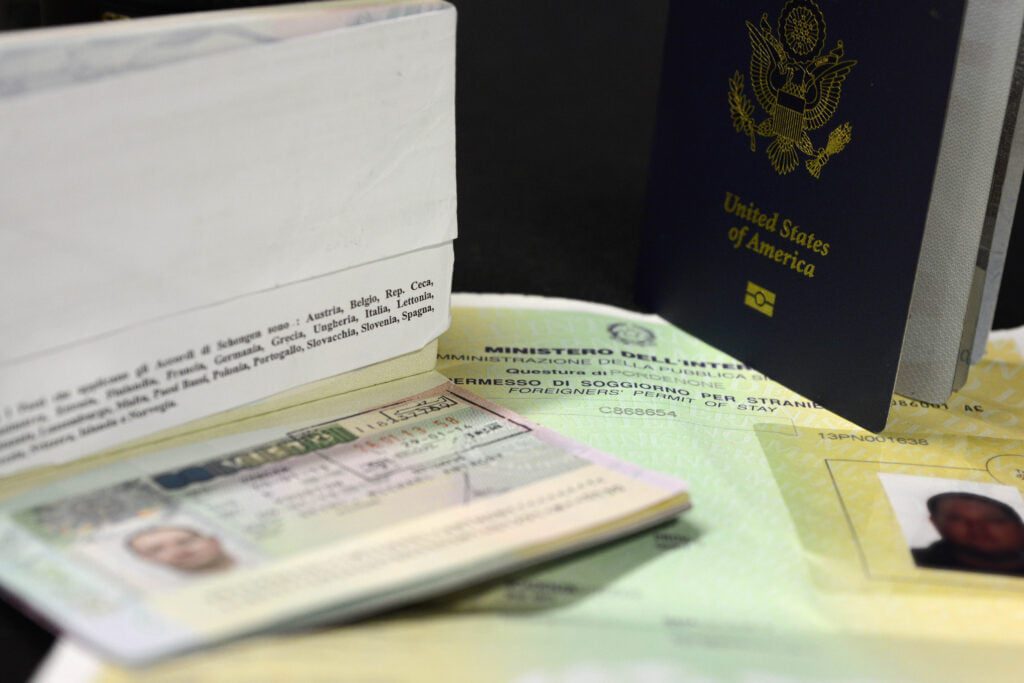Unites States is regarded as the most lucrative location that attracts most students and tourists for business or travel purposes. People who visit the country as tourists often search for ways to extend their visit either to work or live in the country. There are multiple ways to extend your stay in the country and obtain different visas. Although, the easiest route to become a permanent resident is considered to be in a marriage to a permanent resident or a Green Card holder in the US. Many non-immigrants get married to US citizens or Green Card holders to obtain a marriage visa through which they get the license to stay in the country for at least 5-10 years until they can apply for permanent citizenship.
Marriage Visa Types
There are two types of marriage visa that the spouse of a US citizen can apply for:
Immigrant spouse visa of a US citizen: When the alien spouse of a US citizen is already in the country, the US citizen can apply directly to the Department of Homeland Security and U.S. Citizenship and Immigration Services (USCIS) on behalf of their spouse. Form I-130 is required for an immigrant petition for an alien relative. The alien spouse can also file for the Form I-485 if they want to change their status to permanent resident.
Non-immigrant visa for a K3 spouse: The application for the non-immigrant spouse who married a US citizen should be filed and visa should be issued in the country where the marriage took place. National Visa Center of the US Department sends Packet 3 which comprises of immigration forms and information package to the US citizen once the immigration petition is approved. Once the necessary documents are completed, the alien spouse travels overseas to the U.S. Consulate to apply for an immigrant visa.
Alien Spouse Petitions
There are 2 types of petitions which are required for this case:
Form I-130 for Petition for Alien Relative and Form I-129F for Petition for Alien Fiancé(e) are the petitions for different alien spouse types. The non-immigrant spouse becomes a permanent resident the day they get admission into the US. If a US citizen has a non-immigrant fiance, they can petition for a non-immigrant fiance K-1 visa. An I-129 petition is filed for the same.

Non-immigrants can also file for a change of status from a B-1/B-2 Visa extension to a marriage visa once they marry a US citizen. However, they cannot apply for a change of status to a marriage visa up to 90 days of the issuance of their B-1/B-2 Visa.
Another important application of Green Card that should be highlighted is that obtaining a Green Card for an O-1 Visa holder is an easier process as compared to any other visa status. Hence, obtaining a Green Card for the O-1 Visa spouse also becomes a less strenuous process. O-1 Visa spouse which is also known as the O-3 Visa is issued to the spouse and unmarried children of O-1 or O-2 Visa holders. The O-1 visa spouse and children are given a license for the same duration as the O-1 Visa holders, which is about 3 years with numerous extensions. Although, O-3 Visa holders are not given the permit to work in the US.
Conditional Green Card
A conditional Green Card is issued to the spouse of a US citizen if they got married less than two years ago before the alien spouse entered the US as a permanent resident. So in the case of marriage terminating by divorce or annulment within the two years, the marriage visa of the spouse may also be revoked. Apart from this exception, the alien spouse is considered to be a US permanent citizen in every other respect. The non-immigrant spouse can work for any employer in the US once the work permit is issued and the spouse can also travel outside the US legally once the travel document is approved.
Both the partners need to petition jointly to remove the immigration condition on the alien spouse’s permanent residency within 90 days before the second anniversary of the spouses’ entry to the US as a permanent resident. If the petition is not filed jointly, it would result in termination of conditional permanent residency.









